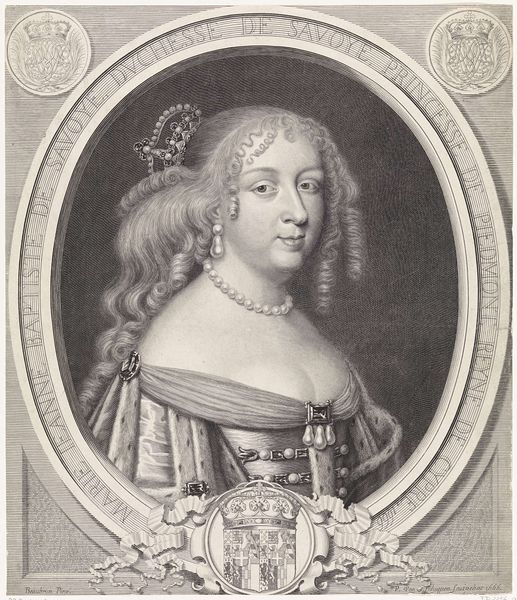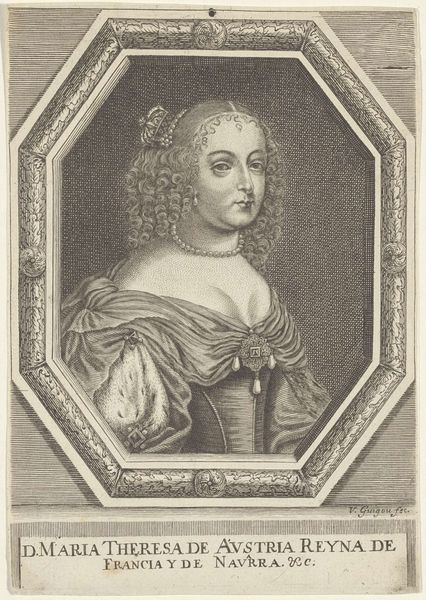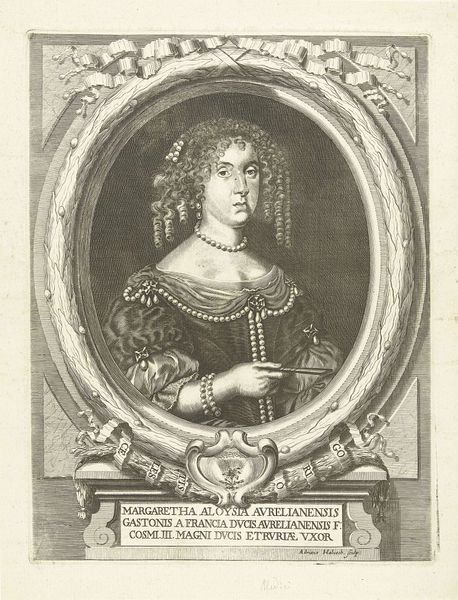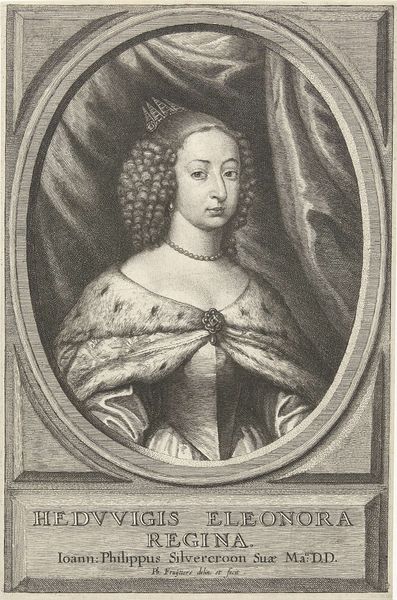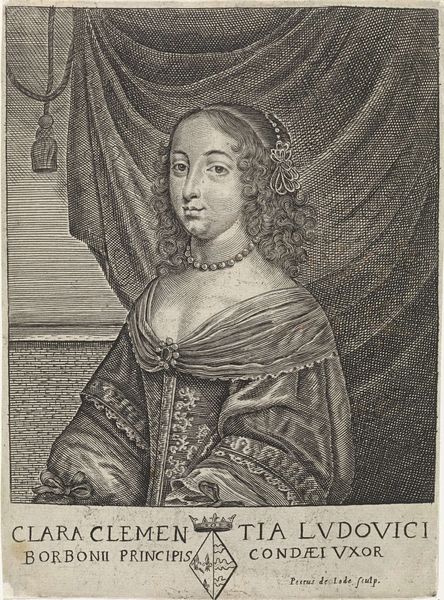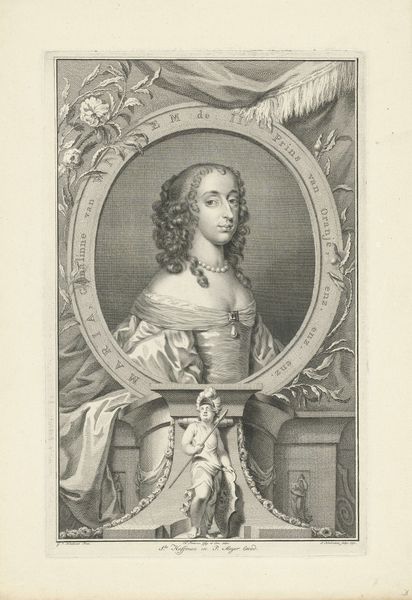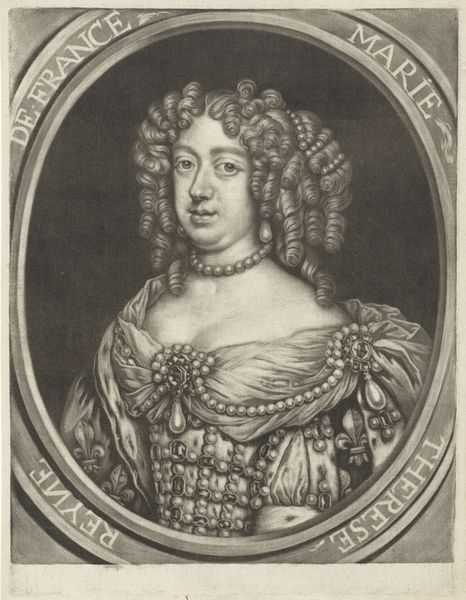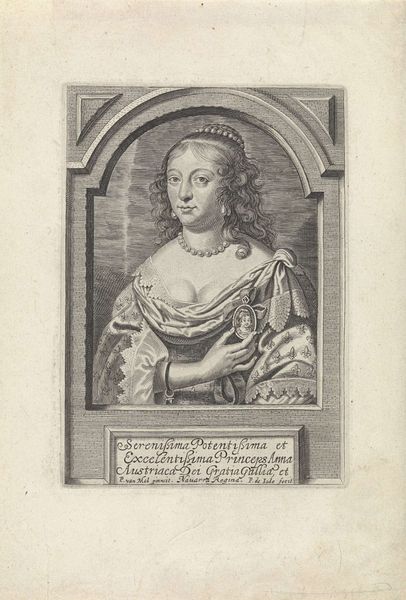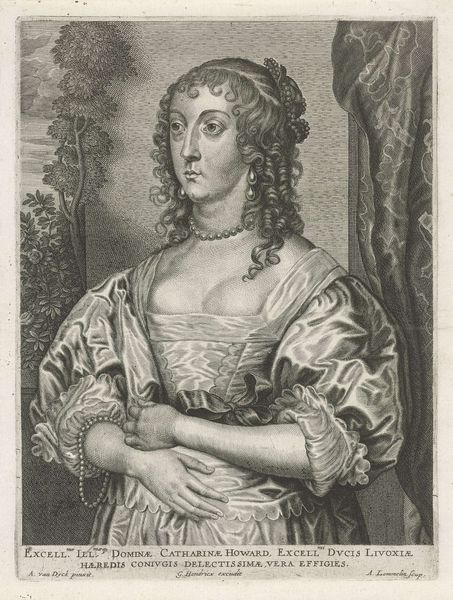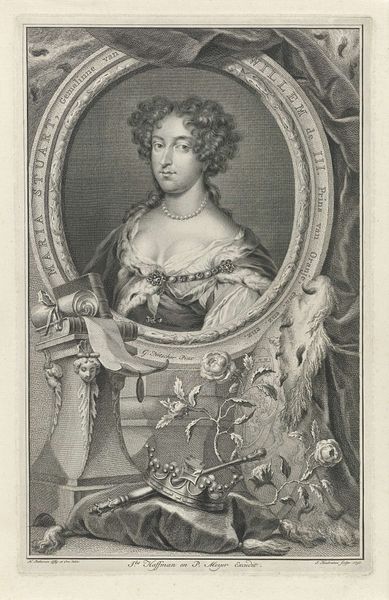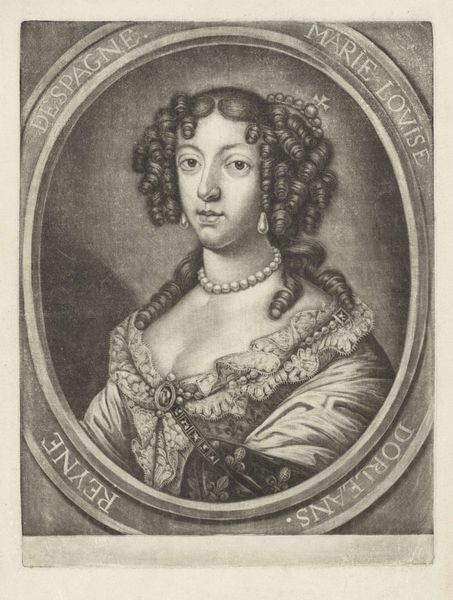
engraving
#
portrait
#
baroque
#
dutch-golden-age
#
portrait drawing
#
engraving
Dimensions: height 386 mm, width 247 mm
Copyright: Rijks Museum: Open Domain
Editor: This is a really fascinating engraving, “Portret van Amalia van Solms,” made in 1753 by Jacob Houbraken, held here at the Rijksmuseum. The Baroque style feels both formal and celebratory to me. What stands out to you about this piece? Curator: Well, this portrait isn't just a likeness; it's a carefully constructed image of power and status. Amalia van Solms was a significant figure, the wife of Prince Frederik Hendrik and a key player in the Dutch Golden Age. How do you think Houbraken uses the imagery surrounding her to communicate that? Editor: I notice elements like the oval frame with the coat of arms. And are those musical instruments at the bottom? Curator: Exactly. Consider where portraits like these would have been displayed - often in the homes of other nobles, demonstrating social connections and aspirations. The lyre alludes to Amalia's patronage of the arts. It's a way of saying she's cultured and refined, right? Editor: So, it's not just about her individual beauty or personality, but about crafting a public image connected to broader societal values? Curator: Precisely! Think about the politics of portraiture then. Commissioning and circulating images were strategic moves. They projected authority, reinforced alliances, and shaped historical narratives. How does understanding this change your initial impression of the work? Editor: I see it less as just a portrait and more as a kind of carefully produced propaganda. It makes you wonder who saw these portraits and what effect it had on them. Thanks! Curator: And now when we look at portraiture from this time, we can read so much more into the symbols presented before us. Thank you!
Comments
No comments
Be the first to comment and join the conversation on the ultimate creative platform.
